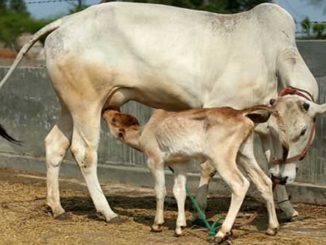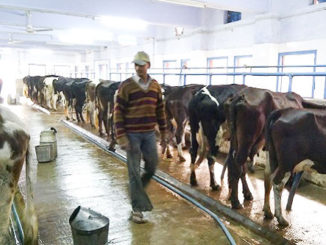
Clinical Application of Reproductive Hormones and Related Substances
The process of reproduction in all farm animals begins with exhibition of cyclical activity after attaining age of puberty. The start of biological clock (estrus cycle) is a >>>

The process of reproduction in all farm animals begins with exhibition of cyclical activity after attaining age of puberty. The start of biological clock (estrus cycle) is a >>>

Synchronization is the process in which we bring group of animals together in estrus within a stipulated period of time. In a group of randomly cycling females, the time of occurrence of estrus >>>

Designer eggs are those in which the content has been modified from standard egg. The content of the chicken egg can be changed in such a way as to be more healthful. >>>

Mycotoxins are toxic secondary metabolites produced by fungi (molds) that cause an undesirable effect (mycotoxicosis) when animals are exposed. Exposure is usually by consumption of contaminated >>>

The contribution of goat in total livestock is 27.80%, which is a major share goat in total livestock. Goat is being raised as poor man’s cow due to its importance of providing >>>

In a group of randomly cycling females, the time of occurrence of estrus cannot be predicted with certainty for an individual animal. Detection of estrus is time consuming, laborious and subject to >>>

Ruminal Microbial Protein Synthesis Ruminants are distinguished from the rest of the animals by the morpho-physiological adaptation of the upper part of their stomach. This peculiarity allows them >>>

In India we consider cattle as part of the family and take good care of animal. Unfortunately, the oral hygiene is one of the ignored aspects as far as wellbeing of the animal is considered >>>

Infectious diseases in animals pose a serious and continuing threat to food security, food safety, national economies, biodiversity and the rural environment. An infectious animal disease can spread >>>

After heifers reach puberty cyclicity is begins. Estrous cycles give a chance to heifer or cow to become pregnant about every 21 days. During each estrous cycle, follicles develop in wavelike patterns >>>

Almost the entire quantity of dry fodder comes from the cultivated crops, mainly from cereals as straws. Of the 757 Mt of green fodder consumed by livestock, about 40 per cent (302 Mt) comes from grazing while cultivated fodder crops >>>

The feeding of ruminant livestock in many countries of the world is dependent on readily available low quality roughages or crop residues. In poorer countries that are densely populated >>>

The prenatal period is the most hazardous in the life of all animals. The main causes of prenatal morbidity and mortality are, in descending order of importance >>>

Obstacles due to foetal monstrosities during parturition leads to dystocia and it is commonly observed in bovine. Dystocia due to dicephalus monster calf and its successful management by caesarean >>>